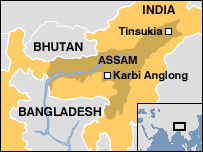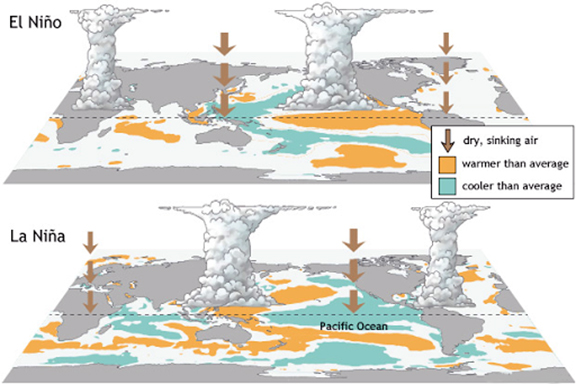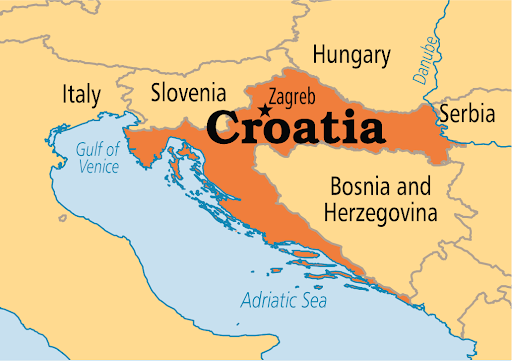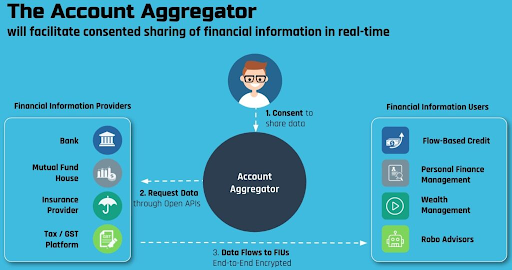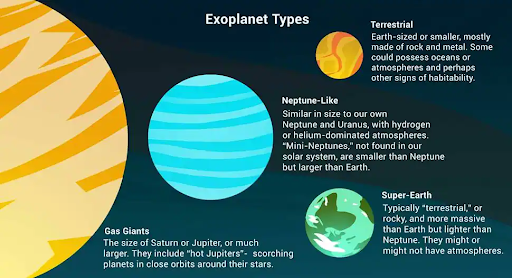Governance
Karbi Anglong Agreement
Why in News
Recently, a tripartite agreement among five insurgent groups of Assam, the Centre and the state government was signed.
- This agreement is in synergy with the vision of Insurgency free prosperous North East, that envisages all-round development of northeast, peace and prosperity.
Key Points
- About the Karbi Anglong Crisis
- Located in central Assam, Karbi Anglong is the state’s largest district and a melting pot of ethnicities and tribal groups — Karbi, Dimasa, Bodo, Kuki, Hmar, Tiwa, Garo, Man (Tai speakers), Rengma Naga. Its diversity also generated different outfits and fuelled an insurgency that did not allow the region to develop.
- The Karbis are a major ethnic group of Assam, dotted by several factions and splinters. The history of the Karbi group has been marked by killings, ethnic violence, abductions and taxation since the late 1980s.
- Insurgent groups of Karbi Anglong district like People's Democratic Council of Karbi Longri (PDCK), Karbi Longri NC Hills Liberation Front (KLNLF), etc. originated from the core demand of forming a separate state.
- Some of the other demands of the militant groups are:
- Inclusion of some areas into Karbi Anglong Autonomous Council (KAAC),
- Reservation of seats for Scheduled Tribes,
- More powers to the council,
- Inclusion of Karbi language in the Eighth Schedule,
- Financial package of Rs 1,500 crore.
Note
- The Karbi Anglong Autonomous Council (KAAC) is an autonomous district council, protected under the Sixth Schedule of the Indian Constitution.
- Highlights of the Karbi-Anglong Peace Agreement:
- Karbi Outfits Surrendered: 5 militant organizations (KLNLF, PDCK, UPLA, KPLT and KLF) laid down arms and more than 1000 of their armed cadres have given up violence and joined the mainstream of society.
- Special Development Package: A special development package of Rs. 1000 crore will be allocated over five years by the Central Government and the Assam Government to take up special projects for the development of Karbi areas.
- More Autonomy to KAAC: This agreement will transfer as much autonomy as possible in exercising their rights to the Karbi Anglong Autonomous Council, without affecting the territorial and administrative integrity of Assam.
- Overall, the present agreement proposes to give more legislative, executive, administrative and financial powers to the KAAC.
- Rehabilitation: A provision has been made in this agreement to rehabilitate the cadres of armed groups.
- Development of Local People: The Government of Assam will set up a Karbi Welfare Council to focus on the development of the Karbi people living outside the KAAC area.
- This agreement will also ensure the protection of the culture, identity, language, etc. of the Karbi people and all-round development of the region.
- The Consolidated Fund of the State will be amended to meet the resources of the KAAC.
- Other Recent Peace Agreements of the Northeast:
- NLFT Tripura Agreement, 2019: National Liberation Front of Twipra (NLFT) has been banned under the Unlawful Activities (Prevention) Act, 1967 since 1997 and has been involved in violence, operating from their camps across the international border.
- NLFT signed a Memorandum of Settlement on 10th of August, 2019 with the Government of India and Tripura.
- Under this, a Special Economic Development Package (SEDP) of Rs.100 crore has been offered by the Government of India for a period of five years.
- Bru Accord, 2020: Bru or Reang is a community indigenous to Northeast India, living mostly in Tripura, Mizoram and Assam. In Tripura, they are recognised as a Particularly Vulnerable Tribal Group.
- In Mizoram, they have been targeted by groups that do not consider them indigenous to the state.
- In 1997, following ethnic clashes, nearly 37,000 Brus fled Mizoram and were accommodated in relief camps in Tripura.
- Under the Bru accord, the permanent settlement of 6959 Bru families in Tripura with a financial package has been agreed between the Government of India, Tripura and Mizoram with representatives of Bru migrants.
- Bodo Peace Accord: Bodos are the single largest community among the notified Scheduled Tribes in Assam. They have been demanding a Bodo state since 1967-68.
- In 2020, the Government of India, Government of Assam and representatives of Bodo groups signed an agreement, wherein the Bodoland Territorial Area District (BTAD) was redrawn and renamed as the Bodoland Territorial Region (BTR), in Assam.
- NLFT Tripura Agreement, 2019: National Liberation Front of Twipra (NLFT) has been banned under the Unlawful Activities (Prevention) Act, 1967 since 1997 and has been involved in violence, operating from their camps across the international border.
Geography
Impact of Climate Change on El Nino and La Nina
Why in News
According to recent research, climate change can cause extreme and more frequent El Niño and La Niña events.
- The findings have been obtained using one of South Korea’s fastest supercomputers, Aleph.
Key Points
- About the Recent Findings:
- Increasing atmospheric carbon dioxide can cause a weakening of future simulated El Nino-Southern Oscillation (ENSO) sea surface temperature variability.
- Future El Niño events will lose heat to the atmosphere more quickly due to the evaporation of water vapour. Also, in the future there will be a reduced temperature difference between the eastern and western tropical Pacific, inhibiting the development of temperature extremes during the ENSO cycle.
- There can be a weakening of Tropical Instability Waves (TIWs) in the projected future which can cause a disruption of the La Niña event.
- TIWs are a dominant feature of monthly variability in the equatorial Pacific and Atlantic Ocean.
- ENSO:
- El Nino and the Southern Oscillation, also known as ENSO is a periodic fluctuation in sea surface temperature (El Niño) and the air pressure of the overlying atmosphere (Southern Oscillation) across the equatorial Pacific Ocean.
- El Nino and La Nina are complex weather patterns resulting from variations in ocean temperatures in the Equatorial Pacific Region. They are opposite phases of what is known as the ENSO cycle.
- El Nino and La Nina episodes typically last nine to 12 months, but some prolonged events may last for years.
- El Nino:
- About:
- El Nino is a climate pattern that describes the unusual warming of surface waters in the eastern tropical Pacific Ocean.
- It is the “warm phase” of ENSO.
- It occurs more frequently than La Nina.
- El Nino is a climate pattern that describes the unusual warming of surface waters in the eastern tropical Pacific Ocean.
- Impact:
- The warmer waters cause the Pacific jet stream to move south of its neutral position. With this shift, areas in the northern US and Canada are dryer and warmer than usual. But in the US Gulf Coast and Southeast, these periods are wetter than usual and have increased flooding.
- As El Nino brings rain to South America, it brings droughts to Indonesia and Australia.
- El Niño also has a strong effect on marine life off the Pacific coast.
- During normal conditions, upwelling brings water from the depths to the surface; this water is cold and nutrient rich.
- During El Niño, upwelling weakens or stops altogether. Without the nutrients from the deep, there are fewer phytoplankton off the coast. This affects fish that eat phytoplankton and, in turn, affects everything that eats fish.
- The warmer waters can also bring tropical species, like yellowtail and albacore tuna, into areas that are normally too cold.
- About:
- La Nina:
- About:
- La Nina, the “cool phase” of ENSO, is a pattern that describes the unusual cooling of the tropical eastern Pacific.
- La Nina events may last between one and three years, unlike El Nino, which usually lasts no more than a year.
- Both phenomena tend to peak during the Northern Hemisphere winter.
- La Nina, the “cool phase” of ENSO, is a pattern that describes the unusual cooling of the tropical eastern Pacific.
- Impact:
- Off the west coast of the Americas, upwelling increases, bringing cold, nutrient-rich water to the surface.
- It usually has a positive impact on the fishing industry of western South America.
- It can also lead to a more severe hurricane season.
- Causes the jet stream to move northward and to weaken over the eastern Pacific.
- Causes drought in the South American countries of Peru and Ecuador.
- There are increased temperatures in Western Pacific, Indian Ocean and off the Somalian coast. It also leads to heavy floods in Australia.
- About:
Biodiversity & Environment
Raptor Species under Threat
Why in News
According to recent research, around 30% of the 557 raptor species around the world are threatened by extinction to some degree.
- It is an analysis by the International Union for the Conservation of Nature (IUCN) and BirdLife International (a global partnership of conservation organisations (NGOs)).
Key Points
- Raptor Species:
- About: A raptor is a bird of prey. A bird of prey is a carnivore (meat eater) that kills and eats mammals, reptiles, amphibians, insects, rodents as well as other birds.
- All raptors have a hooked beak, strong feet with sharp talons, keen eyesight, and a carnivorous diet.
- Significance:
- Raptors prey on a wide range of vertebrates and thus, facilitate long-distance seed dispersal. This indirectly increases seed production and pest control.
- Birds of prey are predators at the top of the food chain; because threats like pesticides, habitat loss, and climate change have the most dramatic impact on top predators, these are referred to as indicator species.
- Population: Indonesia has the most raptor species, followed by Colombia, Ecuador and Peru.
- Examples: Owls, vultures, hawks, falcons, eagles, kites, buteos, accipiters, harriers, and osprey.
- About: A raptor is a bird of prey. A bird of prey is a carnivore (meat eater) that kills and eats mammals, reptiles, amphibians, insects, rodents as well as other birds.
- Cause of Threat:
- Use of Diclofenac: Some vulture populations have declined by over 95% in Asian countries such as India because of the widespread use of diclofenac.
- Diclofenac is a non-steroidal anti-inflammatory drug.
- Deforestation: The population of Philippine eagles, the largest variety of eagles in the world, decreased rapidly in the last decades due to extensive deforestation.
- The Philippine Eagle is Critically Endangered under IUCN Red List.
- Shooting and Poisoning: In Africa, vulture populations have decreased by an average of 95% in rural areas over the last 30 years as the result of shooting and poisoning through feeding on carcasses of livestock treated with diclofenac.
- Habitat Loss and Degradation: The Annobon scops-owl, restricted to Annobon Island off West Africa, was recently classified as ‘critically endangered’ under the IUCN Red List because of rapid habitat loss and degradation.
- Use of Diclofenac: Some vulture populations have declined by over 95% in Asian countries such as India because of the widespread use of diclofenac.
- Conservation Efforts:
- Raptors MoU (Global): The Memorandum of Understanding on the Conservation of Migratory Birds of Prey in Africa and Eurasia is also known as Raptors MoU.
- It is an agreement under Convention on the Conservation of Migratory Species of Wild Animals (CMS). CMS or Bonn Convention provides a global platform for the conservation and sustainable use of migratory animals and their habitats.
- It is not legally binding.
- India’s Conservation Efforts:
- India is a signatory to Raptors MoU.
- For the conservation of vultures, India has launched a Vulture Action Plan 2020-25.
- India is also a part of the SAVE (Saving Asia’s Vultures from Extinction) consortium.
- The Jatayu Conservation Breeding Centre in Pinjore (Haryana) is the world’s largest facility within the state’s Bir Shikargah Wildlife Sanctuary for the breeding and conservation of Indian vulture species.
- Raptors MoU (Global): The Memorandum of Understanding on the Conservation of Migratory Birds of Prey in Africa and Eurasia is also known as Raptors MoU.
International Relations
India-Croatia Relations
Why in News
Recently, Foregin Ministers of India and Croatia held a meeting. Both countries asserted that they share a lot of common positions on issues like the Indo-Pacific, the situation in Afghanistan, combating terrorism and shared economic interests.
Key Points
- Highlights of the Meeting:
- Tourism is a very important area and both shall strive to expand air connectivity.
- There are a lot of opportunities in the pharmaceuticals, digital and infrastructure sectors like railways.
- Several topics of mutual interest, including EU-India relations, the situation in Afghanistan, economic and cultural cooperation and post-Covid recovery, were also discussed.
- About India-Croatia Relations:
- Croatia is an important Central European country from the point of view of its geo-strategic location, membership of the European Union and NATO, as well as being a significant Gateway to Europe through the Adriatic coastline.
- Relations between India and Croatia have been friendly since the days of the former Yugoslavia.
- The Breakup of Yugoslavia occurred as a result of a series of political upheavals and conflicts during the early 1990s.
- Disintegration gave birth to six new countries namely: Bosnia and Herzegovina, Croatia, Macedonia, Montenegro, Serbia, and Slovenia.
- Indian PM Jawaharlal Nehru and Yugoslavia’s President Josip Broz Tito were also pioneers of the Non-Aligned Movement.
- Croatian people have a deep interest in India. The Indology department in the University of Zagreb has existed for over six decades and an Indian Council for Cultural Relations (ICCR) Hindi chair was set up there a decade ago.
Social Justice
Tuberculosis
Why in News
Centenary celebration is being observed for the Bacille Calmette-Guérin (BCG) vaccine, which is presently the sole vaccine available for the prevention of Tuberculosis (TB).
Key Points
- About:
- TB is caused by a bacterium called Mycobacterium tuberculosis, belonging to the Mycobacteriaceae family consisting of about 200 members.
- Some of Mycobacteria cause diseases like TB and Leprosy in humans and others infect a wide range of animals.
- In humans, TB most commonly affects the lungs (pulmonary TB), but it can also affect other organs (extra-pulmonary TB).
- TB is a very ancient disease and has been documented to have existed in Egypt as early as 3000 BC.
- TB is a treatable and curable disease.
- TB is caused by a bacterium called Mycobacterium tuberculosis, belonging to the Mycobacteriaceae family consisting of about 200 members.
- Transmission:
- TB is spread from person to person through the air. When people with lung TB cough, sneeze or spit, they propel the TB germs into the air.
- Symptoms:
- Common symptoms of active lung TB are cough with sputum and blood at times, chest pains, weakness, weight loss, fever and night sweats.
- Global Impact of TB:
- In 2019, 87% of new TB cases occurred in the 30 high TB burden countries.
- Eight countries accounted for two thirds of the new TB cases:
- India, Indonesia, China, Philippines, Pakistan, Nigeria, Bangladesh and South Africa.
- India reported 1.8 million TB cases between January and December 2020 as compared to 2.4 million the year before.
- In 2019, MDR-TB remained a public health crisis and a health security threat.
- MultiDrug Resistant Tuberculosis (MDR-TB) is a strain of TB that cannot be treated with the two most powerful first-line treatment anti-TB drugs. Extensively Drug Resistant Tuberculosis (XDR-TB) is a form of TB caused by bacteria that are resistant to several of the most effective anti-TB drugs.
- BCG Vaccine:
- BCG was developed by two Frenchmen, Albert Calmette and Camille Guerin, by modifying a strain of Mycobacterium bovis (that causes TB in cattle). It was first used in humans in 1921.
- In India, BCG was first introduced in a limited scale in 1948 and became a part of the National TB Control Programme in 1962.
- In addition to its primary use as a vaccine against TB, it protects against respiratory and bacterial infections of the newborns, and other mycobacterial diseases like Leprosy and Buruli’s ulcer.
- It is also used as an immunotherapy agent in cancer of the urinary bladder and malignant melanoma.
- One intriguing fact about BCG is that it works well in some geographic locations and not so well in others. Generally, the farther a country is from the equator, the higher is the efficiency.
- It has a high efficacy in the UK, Norway, Sweden and Denmark; and little or no efficacy in countries on or near the equator like India, Kenya and Malawi, where the burden of TB is higher.
- Related Initiatives:
- Global Efforts:
- The WHO (World Health Organisation) has launched a joint initiative “Find. Treat. All. #EndTB” with the Global Fund and Stop TB Partnership.
- WHO also releases the Global Tuberculosis Report.
- India’s Efforts:
- National Strategic Plan (NSP) for Tuberculosis Elimination (2017-2025), The Nikshay Ecosystem (National TB information system), Nikshay Poshan Yojana (NPY- financial support), TB Harega Desh Jeetega Campaign.
- Currently, two vaccines VPM (Vaccine Projekt Management) 1002 and MIP (Mycobacterium Indicus Pranii) have been developed and identified for TB, and are under Phase-3 clinical trial.
- Global Efforts:
Indian Economy
Account Aggregator System
Why in News
Recently, eight major banks have joined the Account Aggregator (AA) network that will enable customers to easily access and share their financial data.
Key Points
- About:
- An AA is a framework that simply facilitates sharing of financial information in a real-time and data-blind manner (Data flow through AA are encrypted) between regulated entities (Banks and NBFCs).
- The RBI (Reserve Bank of India) in 2016 approved AA as a new class of NBFC (Non Banking Financial Companies), whose primary responsibility is to facilitate the transfer of user’s financial data with their explicit consent.
- AAs enable flow of data between Financial Information Providers (FIPs) and Financial Information Users (FIUs).
- The architecture of AA is based on the Data Empowerment and Protection Architecture (DEPA) framework.
- DEPA is an architecture that lets users securely access their data and share the same with third parties.
- Significance:
- For Consumers:
- The AA framework allows customers to avail various financial services from a host of providers on a single portal based on a consent method, under which the consumers can choose what financial data to share and with which entity.
- It permits users to control who gets access to their data, track and log its movement and reduce the potential risk of leakage in transit.
- For Banks:
- As an addition to India’s digital infrastructure, it will allow banks to access consented data flows and verified data. This will help banks reduce transaction costs, which will enable them to offer lower ticket size loans and more tailored products and services to their customers.
- Reduce Frauds:
- AA reduces the fraud associated with physical data by introducing secure digital signatures and end-to-end encryption for data sharing.
- For Consumers:
Way Forward
- Going ahead, a large number of Small and Medium Enterprises (SMEs) can be reached without physical branches and it will transform credit penetration. As we go deeper into this, open banking works wonderfully as India is underserved when it comes to credit and other financial products. A large push will come from awareness and ecosystem-level adoption.
- AA framework can be extended to handle data from other domains also, such as data related to healthcare and telecom. However, if non-licensed entities have to be allowed it is important to have a data privacy framework in place as the RBI currently looks at safeguarding only financial data within its mandate.
Important Facts For Prelims
Hycean Worlds: Exoplanets
Why in News
Recently, some astronomers have identified a new class of exoplanets – Hycean worlds.
Key Points
- About:
- The word Hycean comes from the words hydrogen and ocean. Planet-wide oceans and hydrogen-rich atmospheres might cover these worlds.
- They are also uniquely alien, up to 2.6 times the diameter of Earth, with temperatures up to 200 degrees celsius and thick hydrogen atmospheres. This places them somewhere between Earth and giant planets like Neptune or Uranus.
- With no analogs in the Solar System, these planets are variedly classed as super-Earths or mini-Neptunes depending on inferences about their bulk compositions based on their densities.
- These planets, unlike most mini-Neptunes, may have solid surfaces, like Earth. Many of the known Hycean candidates are larger and hotter than Earth, but still would be able to host large oceans.
- Some Hyceans orbit so close to their stars that they're tidally locked, with one hot dayside and one eternally dark nightside. And some orbit very far away, receiving very little stellar radiation. But life could exist even on such extreme Hyceans.
- Tidal locking is the name given to the situation when an object’s orbital period matches its rotational period.
- Significance:
- The conditions on such planets might be similar to some of the more extreme aquatic environments on our planet, but could theoretically still support at least microbial life.
- Hycean worlds could greatly accelerate the search for life elsewhere. In some ways they are reminiscent of Earth, largely or even completely covered by oceans.
- Hycean worlds could support life different from that on Earth.
- Exoplanets:
- An exoplanet or extrasolar planet is a planet outside the Solar System. The first confirmation of detection of exoplanets occurred in 1992.
- More than 4,400 exoplanets have been discovered till now.
- They are very hard to see directly with telescopes. They are hidden by the bright glare of the stars they orbit. So, astronomers use other ways to detect and study exoplanets such as looking at the effects these planets have on the stars they orbit.
- An exoplanet or extrasolar planet is a planet outside the Solar System. The first confirmation of detection of exoplanets occurred in 1992.
Important Facts For Prelims
Eat Right Station Certification
Why in News
Recently, Chandigarh Railway Station has been awarded a 5- star Eat Right Station certification. It is the fifth station in India to get this recognition.
- The other four stations are Anand Vihar Terminal Railway Station (Delhi), Chhatrapati Shivaji Terminus (Mumbai), Mumbai Central Railway Station (Mumbai) and Vadodara Railway Station. The certification is part of the 'Eat Right India' movement.
Key Points
- About:
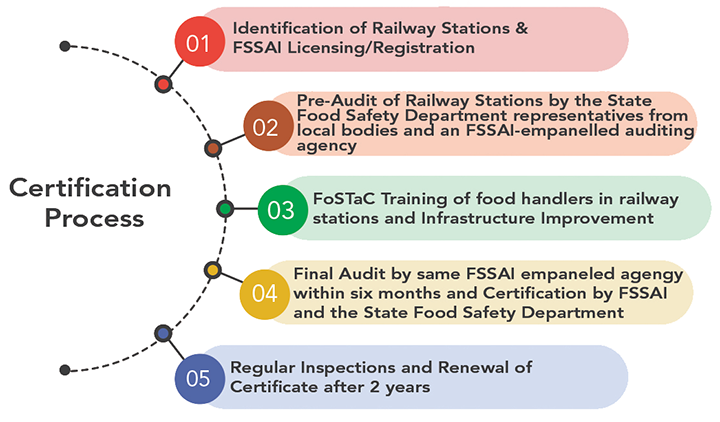
- The 'Eat Right Station' certification is awarded by Food Safety and Standards Authority of India (FSSAI) to railway stations that set benchmarks (As per the Food Safety and Standards Act, 2006) in providing safe and wholesome food to passengers.
- FSSAI is an autonomous statutory body established under the Food Safety and Standards Act, 2006.
- The station is awarded a certificate upon a conclusion of an FSSAI-empanelled third-party audit agency with ratings from 1 to 5.
- The 'Eat Right Station' certification is awarded by Food Safety and Standards Authority of India (FSSAI) to railway stations that set benchmarks (As per the Food Safety and Standards Act, 2006) in providing safe and wholesome food to passengers.
- Eat Right Movement:
- An initiative of FSSAI to transform the country’s food system in order to ensure safe, healthy and sustainable food for all Indians. Its tagline is ‘Sahi Bhojan, Behtar Jeevan’.
- It is aligned to the National Health Policy 2017 with its focus on preventive and promotive healthcare and flagship programmes like Ayushman Bharat, POSHAN Abhiyaan, Anaemia Mukt Bharat and Swachh Bharat Mission.
- It adopts a judicious mix of regulatory, capacity building, collaborative, and empowerment approaches to ensure food safety.
- Related Initiatives:
- State Food Safety Index:
- FSSAI has developed it to measure the performance of States on five parameters of food safety - Human Resources and Institutional Data, Compliance, Food Testing - Infrastructure and Surveillance, Training & Capacity Building and Consumer Empowerment.
- Eat Right Awards:
- Instituted by FSSAI to recognize the contribution of food companies and individuals to empower citizens to choose safe and healthy food options.
- Eat Right Mela:
- Organised by FSSAI, it is an outreach activity for citizens to nudge them towards eating right.
- State Food Safety Index:
Important Facts For Prelims
SIMBEX 2021
Why in News
Recently, India and Singapore have carried out 28th edition of the Singapore-India Maritime Bilateral Exercise (SIMBEX).
Key Points
- About:
- Initiated in 1994, SIMBEX is the Indian Navy's longest uninterrupted bilateral maritime exercise with any foreign navy.
- 28th edition of SIMBEX was a mega naval wargame in the southern fringes of the South China Sea, in reflection of their growing congruence of interests in the strategically key region.
- Other Defence Cooperation:
- Both navies have a representation in each other's Maritime Information Fusion Centres and have also recently signed an agreement on mutual submarine rescue support and coordination.
- Singapore participates in Indian Ocean Naval Symposium (IONS) and multilateral exercise MILAN hosted by the Indian Navy.
- Singapore’s membership of Indian Ocean Rim Association (IORA) and India’s membership of ADDM+ (ASEAN Defence Ministers’ Meeting - Plus) provides a platform for both countries to coordinate positions on regional issues of mutual concern.
- Other Exercises:
- Bold Kurukshetra (Army)
- Joint Military Training (Air Force)
- Trilateral Maritime Exercise SIMTEX (with Thailand).
Note:
- Singapore has been Ranked 2nd in the most powerful passport report ‘Henley Passport Index 2021’.
- The first UN treaty to be named after Singapore, the United Nations Convention on International Settlement Agreements Resulting from Mediation (or, Singapore Convention on Mediation) recently came into force.
- Recently, the Hawker Culture in Singapore was inscribed on the UNESCO Representative List of the Intangible Cultural Heritage of Humanity.
Important Facts For Prelims
World University Rankings 2022: THE
Why in News
The Times Higher Education (THE) recently released its World University Rankings 2022 edition.
- THE, formerly known as The Times Higher Education Supplement (THES), is a magazine reporting specifically on news and issues related to higher education.
- Earlier, Quacquarelli Symonds (QS) released the QS World University Rankings 2022.
Key Points
- About:
- The rankings cover the four main areas of university activity: teaching, research, knowledge transfer and international outlook and THE has been releasing data since 2004.
- India’s Ranking:
- Overall, India is home to 35 of the world’s top 1,000 universities, its second-highest total ever in the rankings. Last year, it was 36.
- Top Performer was Indian Institute of Science (IISc) followed by IIT Ropar and JSS Academy of Higher Education and Research.
- Global Ranking:
- Globally, the University of Oxford tops the ranking for the sixth consecutive year, while mainland China’s Tsinghua University becomes the first Asian university to break into the top 20 under the current methodology (launched in 2011).
- Country-wise, the US is the most-represented country overall with 183 institutions.
- Related Indian Initiatives:
- Institutions of Eminence (IoE) Scheme:
- To provide the regulatory architecture for setting up or upgrading of 20 Institutions (10 from public sector and 10 from the private sector) as world-class teaching and research institutions called ‘Institutions of Eminence’.
- National Education Policy, 2020:
- To introduce several changes in the Indian education system - from the school to college level and make India a global knowledge superpower.
- Impacting Research Innovation and Technology (IMPRINT):
- A first-of-its-kind Pan-IIT and IISc joint initiative to develop a new engineering education policy and a roadmap for research to solve major engineering and technology challenges.
- Uchhatar Avishkar Yojana (UAY):
- To spur innovative mindset in the students and faculty in premier technological institutes.
- Institutions of Eminence (IoE) Scheme:

